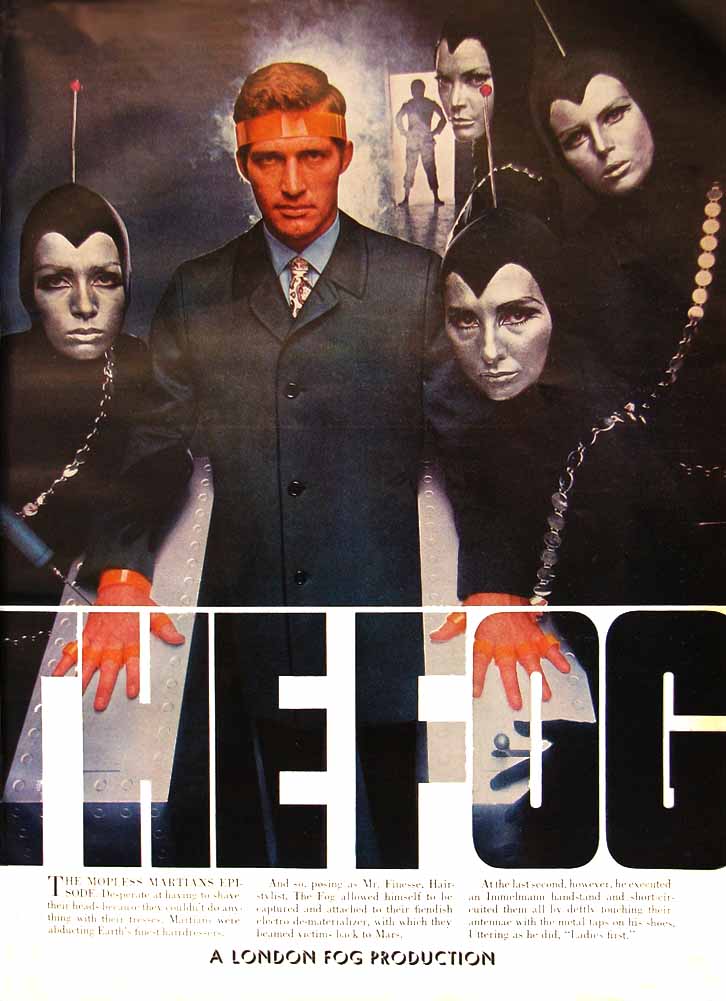 What does an athlete do when she becomes the sport? 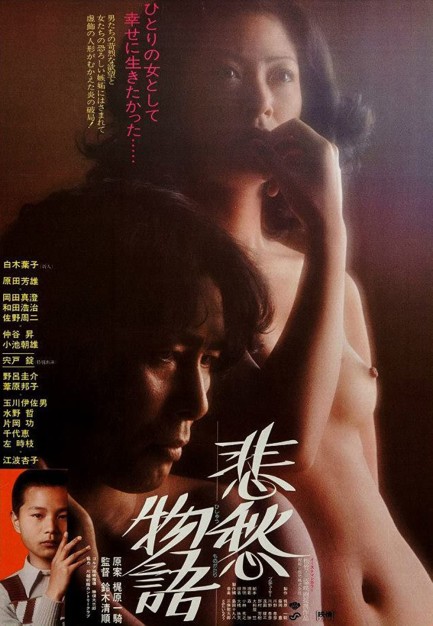
This poster was made for the Japanese movie Hishū monogatari, known in English as A Tale of Sorrow and Sadness, and strangely, though it gives absolutely no indication, it's a sports movie. Well, in the same way Jerry Maguire is a sports movie. It's a drama wrapped in sports. It deals with a golfer and model played by Yoko Shiraki who's picked by the editor of a sport/fashion magazine to be transformed into a star. She can golf fine. That's not a problem at all. She wins her first tournament—despite fainting twice—and is an overnight sensation. The problems come in the form of pressure, rivalries, crowds, modeling sessions (including in a bikini), television appearances (in a bikini), beauty treatments, elocution lessons, and more, all decided upon by roomfuls of men who see her merely as a profit center (in a bikini).
Some movies are simply ahead of their time. This one hits on an entire spectrum of current conversation, including how the expectations on female athletes are greater in various ways than in men's sports, especially the demand that they be beautiful and charming. But because this is a Japanese film, the plot soon shunts into the realm of the bizarre—a hit-and-run accident and blackmail. The shift in tone is not really a surprise, since the movie was adapted from a manga by Kajihara Kazuki. We liked the sports-focused first half better. Even so, Hishū monogatari is a decent effort, worth a watch, in our opinion. There's some confusion on Western sites about the premiere date, but the Japanese Movie Database has it opening today in 1977. It isn't the first golf-oriented Japanese movie we've run across. See here.
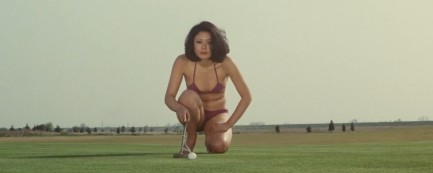 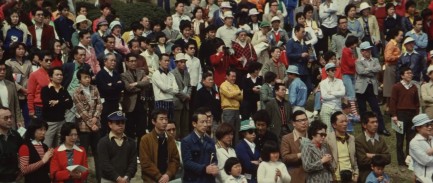 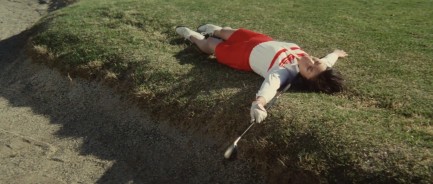 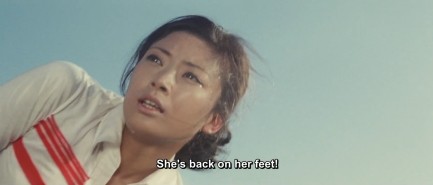 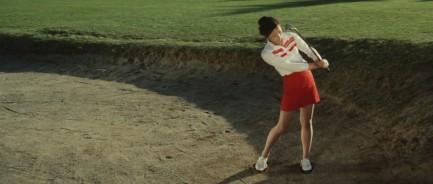  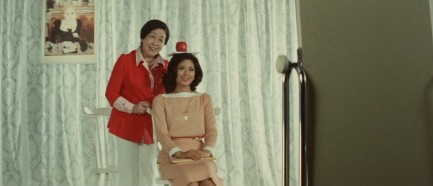 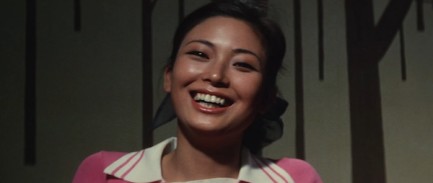 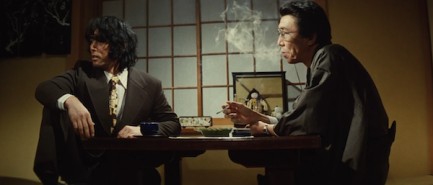 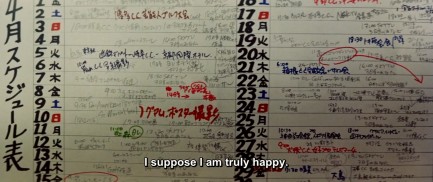 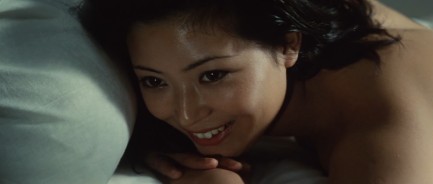 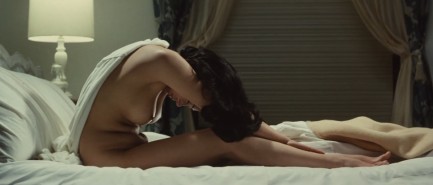 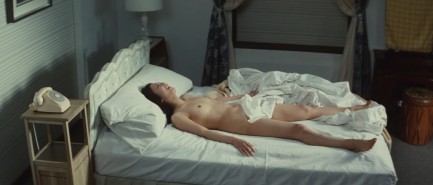 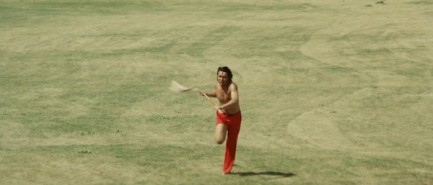  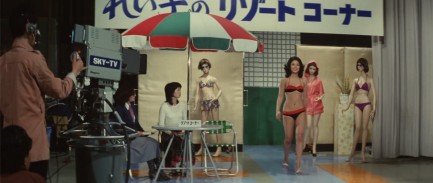 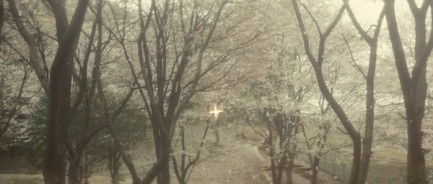 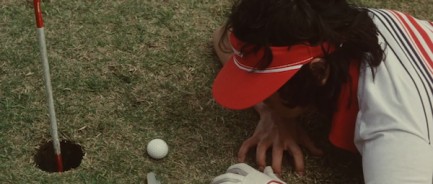 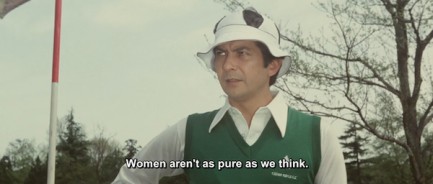 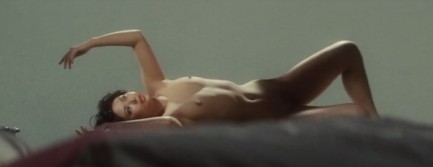 
 Meiko Kaji finds herself in a gang of trouble. 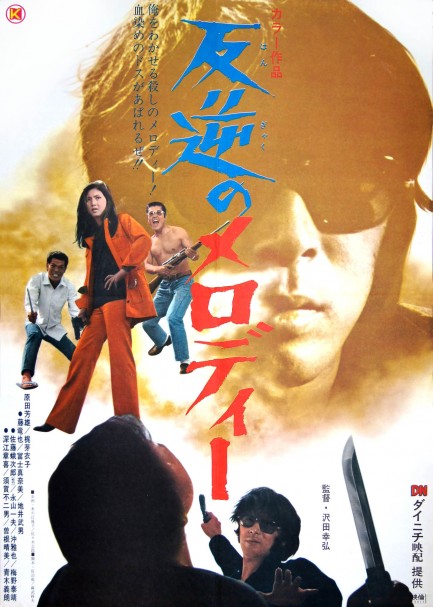
Above and below are two beautiful posters for Hangyaku no Melody, aka Melody of Rebellion, starring Yoshio Harada and Meiko Kaji. We've located and screened some of the most obscure Japanese films of all time. But this one, with two iconic stars—no such luck. But we can tell you that it deals, like many pinku films, with the multifarious challenges of gang life. When (if) we find this one we'll circle back to it. For now just enjoy the posters, which are both significant upgrades from anything currently visible online. Hangyaku no Melody opened in Japan today in 1970. 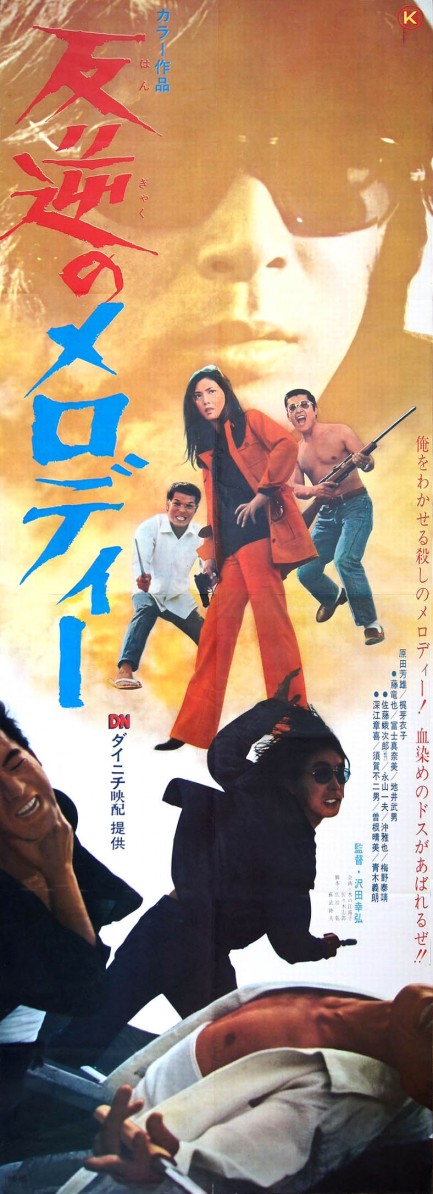 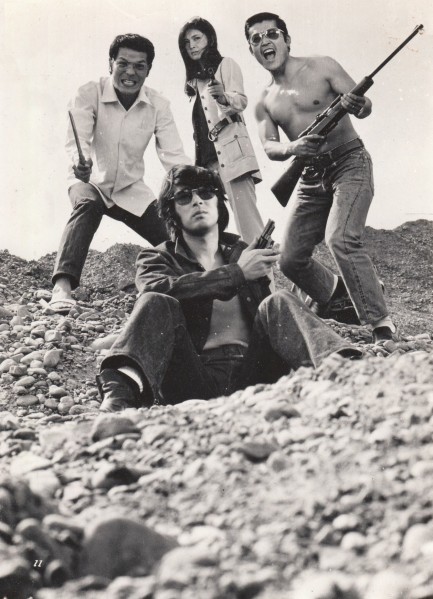
 Meiko Kaji takes the Stray Cat Rock franchise out for a final spin. 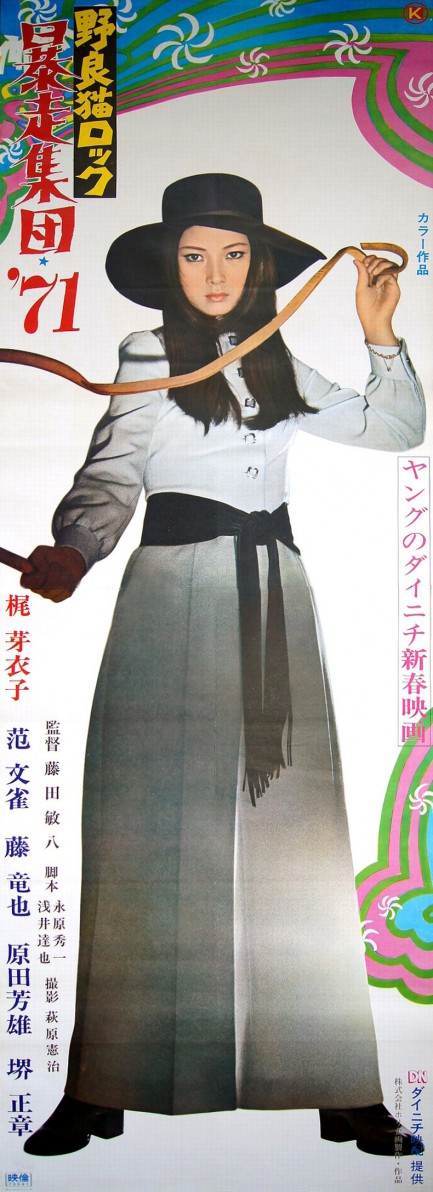
Even Nikkatsu serials eventually end, and this entry in the Stray Cat Rock series, entitled Nora-neko rokku: Bôsô shudan ’71, aka Stray Cat Rock: Crazy Rider ’71, aka Stray Cat Rock: Beat ’71, was the final outing for Meiko Kaji in the franchise. That’s her, of course, looking exceptionally badass on an exceedingly rare promo poster, and below we have even rarer distributor sheets. Plotwise, Kaji has a boyfriend named Ryumei who has spurned the mainstream lifestyle for hippie freedom. When bikers attack Ryumei and Kaji the altercation leads to Ryumei killing one of the thugs. Unluckily for Kaji, he’s whisked away, leaving her to take the murder rap, in turn leading to her being tossed in jail. Turns out Ryumei’s father wants him to give up hippiedom and join the family business, and sent the bikers to kidnap him and bring him home. Kaji escapes from jail a while later, seeks out Ryumei, finds him transformed into a cold-hearted suit, and is imprisoned again, this time by the father’s evil thugs. The main problem with this movie for Kaji fans is she doesn’t get much screen time. Instead much of the tale is told from the other end, as Kaji’s friends, led by Yoshio Harada, plot to free her. This isn’t fatal to the movie, though. If you can embrace the other protagonists you’ll find plenty to enjoy. The sentiment of hippies-versus-power may seem quaint, and indeed the film handles certain elements of their lifestyle comedically, but all these years later, with Japan’s rich getting richer while its poverty rate is among the highest for developed nations, is anyone still laughing? Nora-neko rokku: Bôsô shudan ’71 premiered in Japan today in 1971, and you can see more posters for the series here and here.
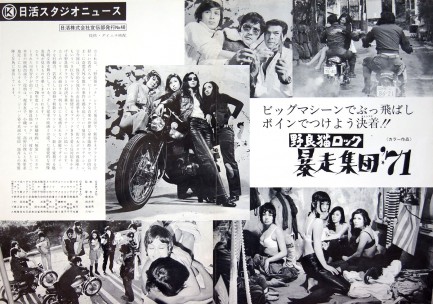  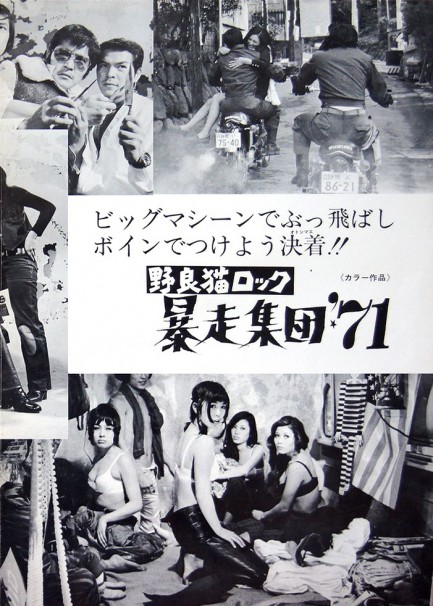 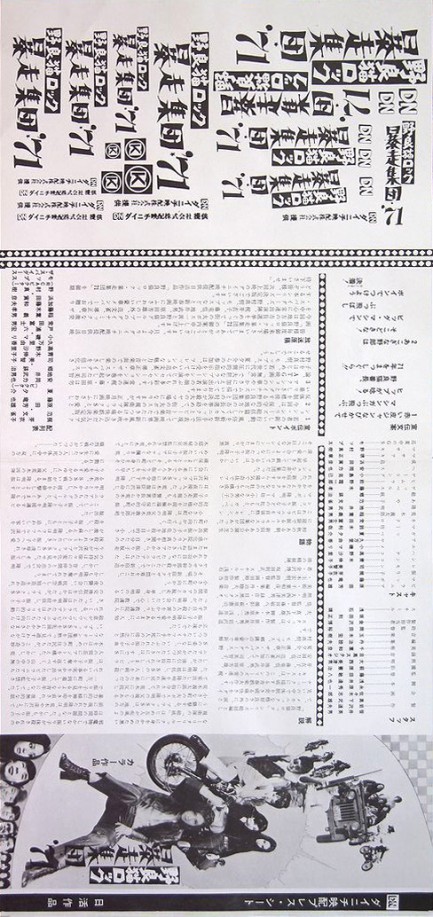
|
 |

The headlines that mattered yesteryear.
2003—Hope Dies
Film legend Bob Hope dies of pneumonia two months after celebrating his 100th birthday. 1945—Churchill Given the Sack
In spite of admiring Winston Churchill as a great wartime leader, Britons elect
Clement Attlee the nation's new prime minister in a sweeping victory for the Labour Party over the Conservatives. 1952—Evita Peron Dies
Eva Duarte de Peron, aka Evita, wife of the president of the Argentine Republic, dies from cancer at age 33. Evita had brought the working classes into a position of political power never witnessed before, but was hated by the nation's powerful military class. She is lain to rest in Milan, Italy in a secret grave under a nun's name, but is eventually returned to Argentina for reburial beside her husband in 1974. 1943—Mussolini Calls It Quits
Italian dictator Benito Mussolini steps down as head of the armed forces and the government. It soon becomes clear that Il Duce did not relinquish power voluntarily, but was forced to resign after former Fascist colleagues turned against him. He is later installed by Germany as leader of the Italian Social Republic in the north of the country, but is killed by partisans in 1945.
|

|
|

It's easy. We have an uploader that makes it a snap. Use it to submit your art, text, header, and subhead. Your post can be funny, serious, or anything in between, as long as it's vintage pulp. You'll get a byline and experience the fleeting pride of free authorship. We'll edit your post for typos, but the rest is up to you. Click here to give us your best shot.

|
|
































































